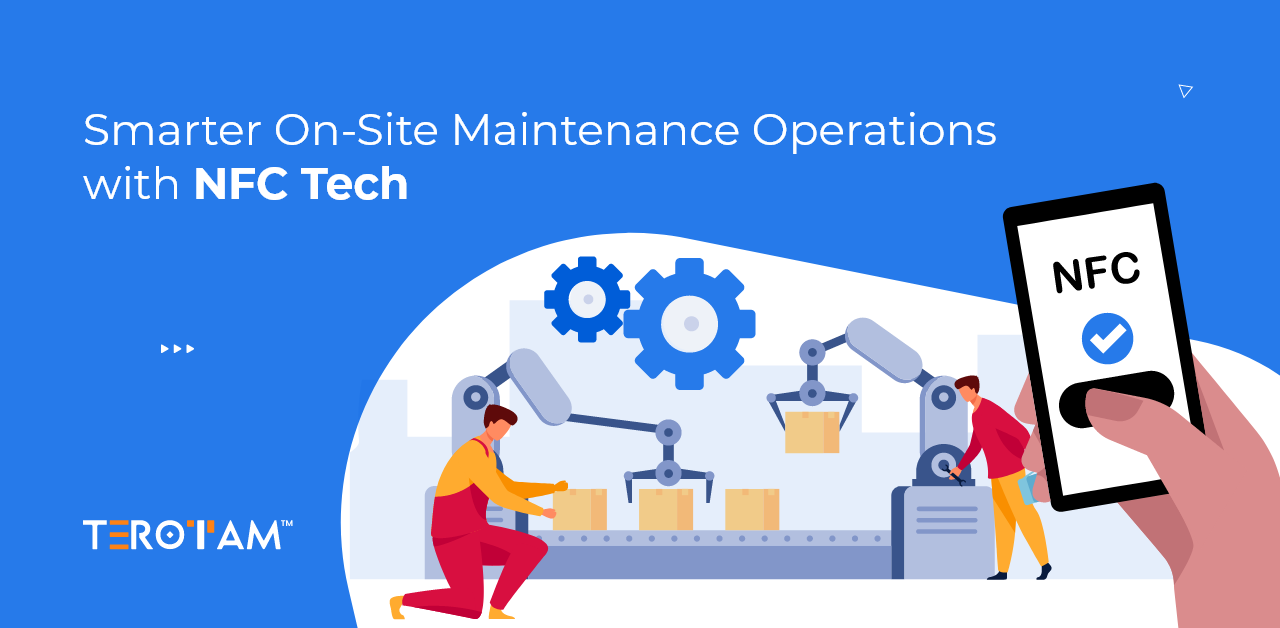Maintenance teams today handle more equipment, more compliance load, and more field movement than ever before. As assets spread across large campuses, remote sites, or multi-floor buildings, the first challenge technicians face isn’t fixing the equipment—it’s reaching the right asset and pulling its correct information on time. That’s where NFC technology is quietly changing how fast and how safely maintenance work gets done.
NFC (Near Field Communication) turns every asset into a smart touchpoint. With one tap, technicians can pull data that earlier demanded searching, scanning, typing, or cross-checking. And because NFC works only when the device is physically close to the tag, it removes many of the misuse possibilities that trouble QR-based systems.
This article walks through how NFC strengthens maintenance operations, improves accuracy, and adds a safety layer that teams often struggle to build manually.
Why NFC solves problems that QR-based maintenance cannot
Most sites adopted QR codes because they are cheap and easy to deploy. But over time, hidden flaws begin to show. QR codes can be photographed, stored on phones, shared on messaging apps, or printed again somewhere else. A technician doesn’t always need to be present at the actual asset location to scan it—this creates blind spots in audits, approvals, and traceability.
NFC removes this loophole because it requires a physical tap. It cannot be scanned from a photo or screenshot. If the technician is not near the asset, the tag simply won’t respond. This single difference changes the trust level of on-site reporting.
More importantly, NFC allows faster data access because it does not require camera alignment, light adjustment, or a clear image. Even in dusty plants, low-light engine bays, outdoor sites, or crowded rooms, it works in less than a second.
How NFC speeds up on-site work
1. Instant asset identification without searching
In older systems, technicians often spend more time finding the right record than solving the issue. NFC eliminates this friction.
- One tap instantly opens the asset page
- Entire history, breakdown records, manuals, and warranty info load automatically
- No typing, no serial number checks, no wrong asset entries
This is especially useful for plants with many look-alike machines, HVAC units, pumps, or electrical panels.
2. Faster reporting and activity logging
Teams often postpone reporting because they are busy fixing issues first. This leads to incomplete or inaccurate logs. With NFC, updates happen the moment work is done.
- Tasks can be closed on the spot
- Photos, notes, and readings can be added immediately
- Time-stamps and technician identity get auto-captured
This creates stronger records without adding extra workload.
3. A safer validation method for inspections and audits
Auditors need proof that inspections were done at the actual location. QR codes fail at this because anyone can use a saved photo. NFC ensures physical presence.
- Tap validation ensures the technician actually visited the asset
- Reduces false entries during audits
- Ensures every checkpoint is covered during rounds
This becomes essential for industries dealing with safety-critical machinery.
4. Better continuity in multi-shift operations
In plants running round-the-clock shifts, handover quality affects uptime. NFC keeps the flow smooth.
- New shift members can review previous readings instantly
- No confusion between similar assets
- SOPs and manuals open automatically when tapped
This reduces downtime caused by miscommunication.
5. Stronger asset traceability in large or complex facilities
Airports, hospitals, malls, universities, and large manufacturing floors operate across wide physical spaces. NFC helps bring everything under one touch-based system.
- Easy tagging of dispersed or mobile equipment
- Quick verification during movement or replacement
- Clear visibility of who handled what and when
The result is a tighter operational cycle where human effort reduces and compliance grows.
How NFC raises the safety bar in maintenance operations
Maintenance mishaps often occur not because the work was done wrong, but because the context was missing—wrong asset, missing SOP, outdated manual, or skipped step. NFC reduces these risks by giving instant access to the right information at the right moment.
Here’s what it adds:
- Access to safety notes before starting any procedure
- Instant view of hazardous-energy guidelines for the specific asset
- Tap-based access to lockout/tagout instructions
- Updated emergency steps always available
Technicians don’t need to search files, ask supervisors, or rely on memory. The tag becomes a mini data station.
Where NFC makes the biggest impact
Industry feedback shows the strongest improvements in:
- Utilities and energy plants
- HVAC service teams across large buildings
- Manufacturing units with heavy equipment
- Facility management teams in hospitals and educational campuses
- F&B and pharma units with high compliance load
- Warehouses and distribution centres with mobile assets
- Retail chains managing dispersed equipment across many outlets
Any operation that depends on physical presence and accurate records benefits heavily from NFC-driven workflows.
TeroTAM’s NFC-powered maintenance system
TeroTAM connects NFC tags directly with its CMMS modules to build a complete tap-and-manage workflow. The tag isn’t just an identifier—it becomes a live gateway to every maintenance activity.
Here’s how the system works:
- Tap to open asset history, manuals, SOPs, photos, and past issues
- Tap again to update tasks, raise new work orders, or add readings
- Automatic time, date, and technician identity capture
- No dependence on scanning images or stored codes
- Stronger compliance across inspections, rounds, and approvals
This creates a maintenance flow that is fast, secure, and consistent across all sites and teams.
Conclusion
NFC is turning each asset into a smart touchpoint that helps technicians work faster, with fewer mistakes, and with better proof of what actually happened on site. It closes the gaps that come from shared QR images, missed entries, and guesswork in the field.
Maintenance teams that handle large sites, multiple locations, or compliance-heavy operations can gain a clear advantage by moving to NFC-led workflows, where every tap connects real-world assets with accurate digital records.
To explore how NFC with TeroTAM can support your maintenance operations, reach out to us at contact@terotam.com









